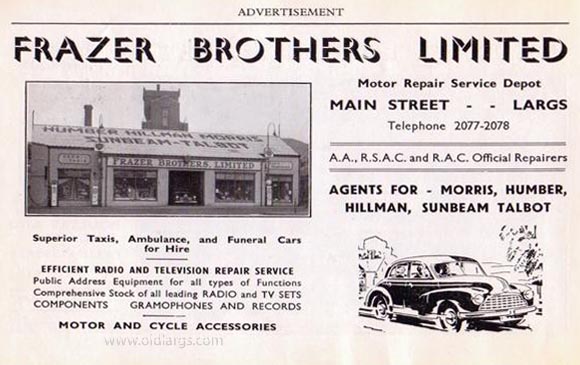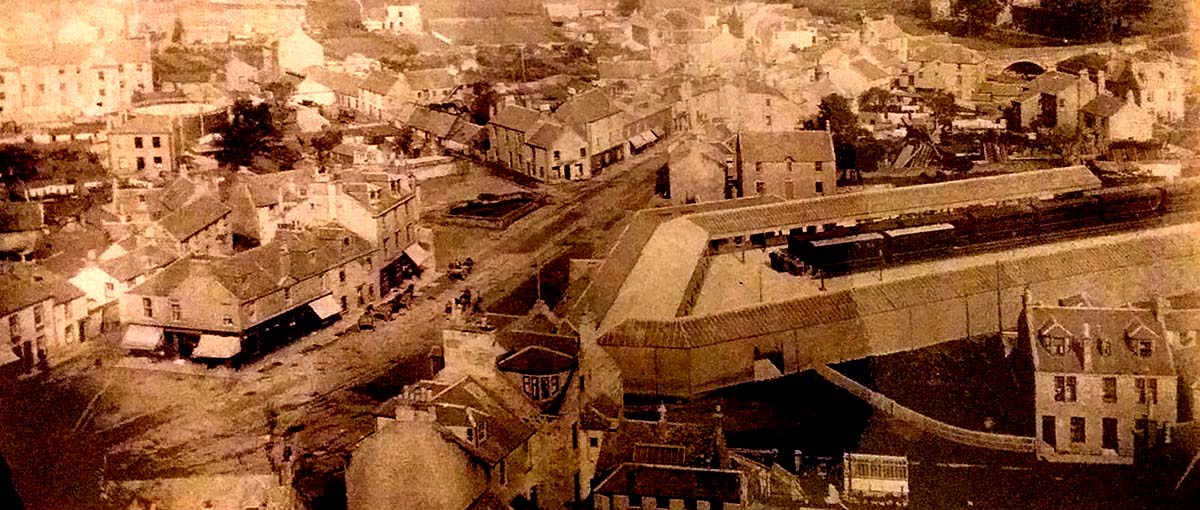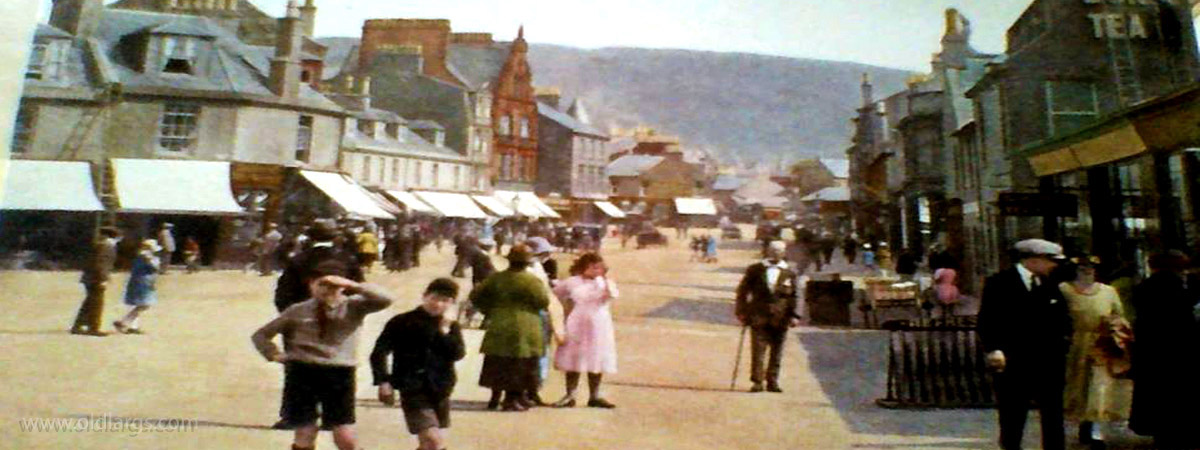
A walk up the Main Street
This part of our walk will take us back onto the Main street and up to the main roundabout and the entrance to Fraser Street.McTaggarts and Thomas Cook Building
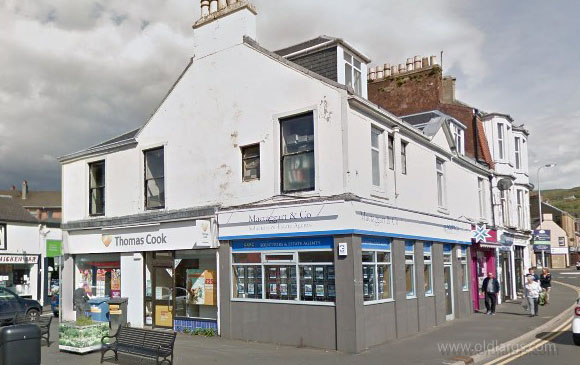
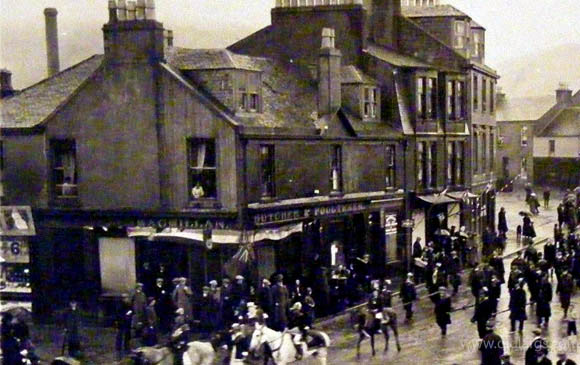
The two images above show today's businesses and also how the same location looked in 1911 with McMillians Butcher at the corner.
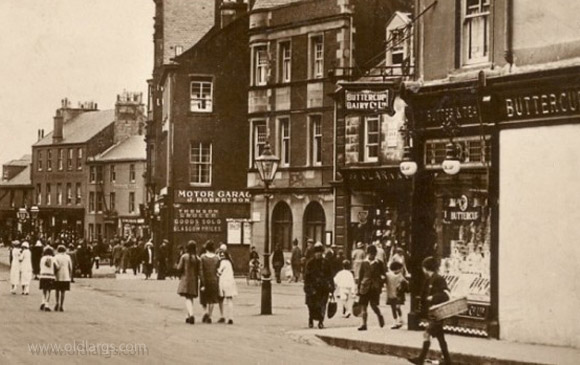
Few today would recognise the name Andrew Ewing the founder of the chain of Buttercup Dairies. At his peak he owned 250 shops across Scotland’s central belt and the company lasted more than 60 years.
Ewing was born near Stranraer in 1869. In 1894 he opened his first grocer shop and in 1904 his first Buttercup dairy. Soon he was opening 15 new shops per year including his Largs ,Gourock, Greenock and Ardrossan shops.
The dairy sold a range of high quality produce, including eggs, butter, margarine and condensed milk.
In time Ewing became one of the wealthiest businessmen in Scotland. He lived in a large house set within extensive grounds at Clermiston Mains in Edinburgh.
As a devout Christian Ewing decided that all eggs laid on a Sunday were to be donated to charity. Given the massive farm which supplied all his eggs this amounted to a staggering five million eggs per year.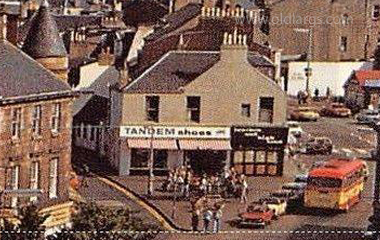
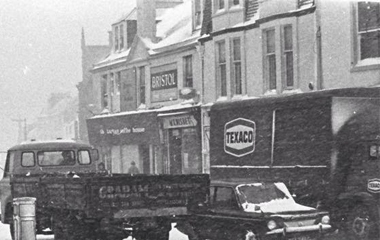
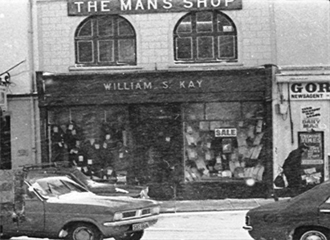
Next door to McTaggarts was Nesbits newsagents, later in 1991 The Card Shop and in 1997 Largs Exchange.
The now empty Down to Earth shop was in the 1850s Miss Crawford Sweetie Shop, Toole's Hairdresser and in 1911 Crawford Confectioners. Later Largs Cancer Care, in 1994 Small World, by 1995 Largs Cancer Care and from 1997 Down to Earth.MaCaulay’s Pub
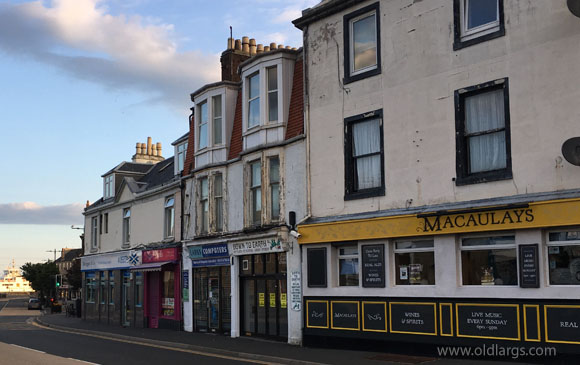
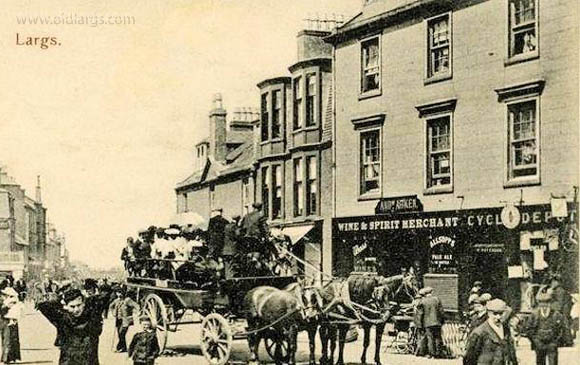
The top left image above shows Macaulay’s pub as it looks today looking good after its recent refurbishment. Top right photo shows Macaulay's when it was the Andrew Aitken pub, which dates from the 1850s, complete with a handy wee bike hiring shop next door.
That shop later was Miss Taylor Ironmonger and a grocers and tobacconist. By 1960s the pub was known as The Argosy and by 1975 renamed to Dee Jays. 1998 seen the name changed to Macaulay’s. Other names over the years have been Wee Joe's and Donald's.Next door which is now empty was from 1898 to 1911 James Rankine Grocer, 1991 Elfs Cabin Shoe Repairer and by 1998 The Key Centre.
The building at the end was once Gordon’s Dairy, before that was Bankhead Dairy which was owned by Robert and Mary McKellar. The flat above was used as living accommodation for the McKellar family then later as an office for Gordon's Dairy. Later in the 1980s upstairs used to be Jennifer's hairdressers. Later in 1991 A & A Ballantyne fruiter, 1995 Gardners, 1997 Car User Car Sundries and recently Glens Electrics.
Entrance to Aitken Street

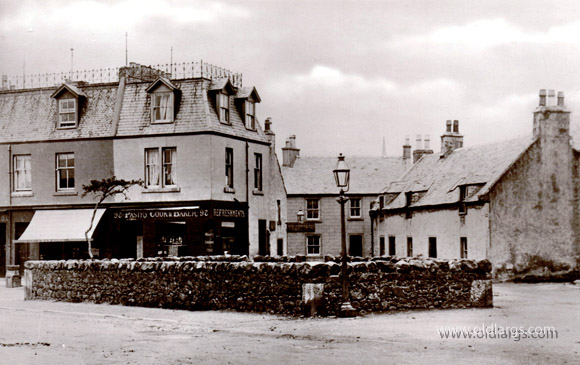
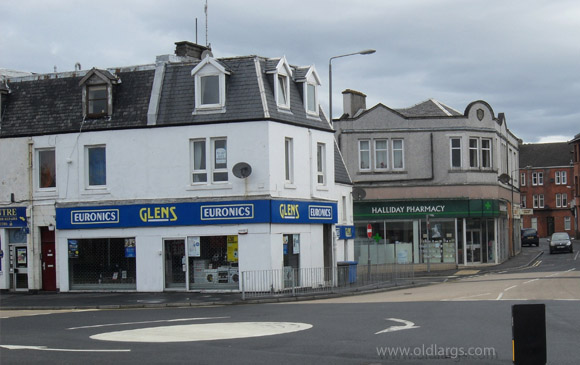
In 1893 the local official’s discussed a proposal changing Piper Row which would create a new street from Boyd Street or Lade Street into the Main Street.
The proposal was later changed to either a continuation of Boyd Street to Main Street or to simply widen Piper Row. For several years the "battle" raged between the 'Straight Street' Party and the 'Piper Row Widening Party'. Eventually in 1899, the Piper Row widening scheme was decided on by 5 votes to 3 and new plans were ordered to be prepared.The re-naming of the street came up for discussion in April 1901 and again in May 1903. New names suggested in these discussions were Trongate, Haco Street, King Street, Piper Avenue, Piper Quadrant, Arthur Street and Tron Street. Later it was decided to give the street its present name of Aitken Street after the name of the first Provost of Largs, John Aitken


Frazer Brother's Garage
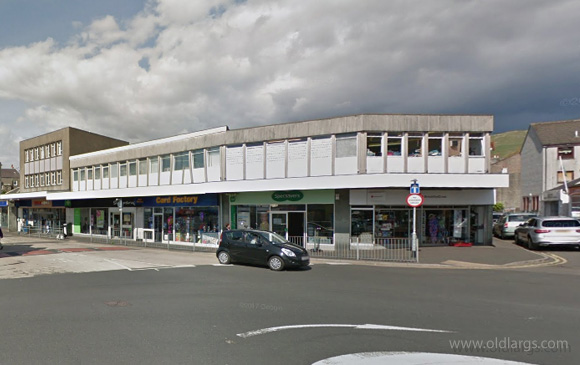
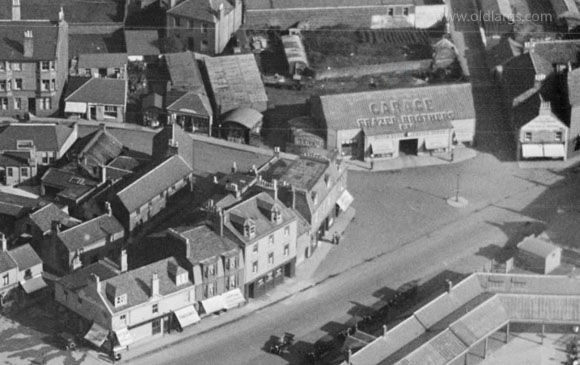
The buildings which house Tescos, Superdrug, The Card Factory, Specsavers and the Red Cross shop was in the 1940s the location of The Frazer Brother's Garage.
The Frazer family's descendants used to run a black smith shop in Frazer Street. The street name was probably named after them.The garage specialised in Hillman cars but they also sold televisions, radios, bikes, vinyl records and sheet music. Later it became Henderson's record shop. It was demolished in the late 1950s to make way today's building which was built to accommodate the new incoming Woolworths in the 1960s.
The image top left is the site as we know it today. The top right image is an 1930s aerial view of the same located showing the garage. The image to the right is a Frazer Brother Advert taken from a 1950s tourist guide to Largs.
